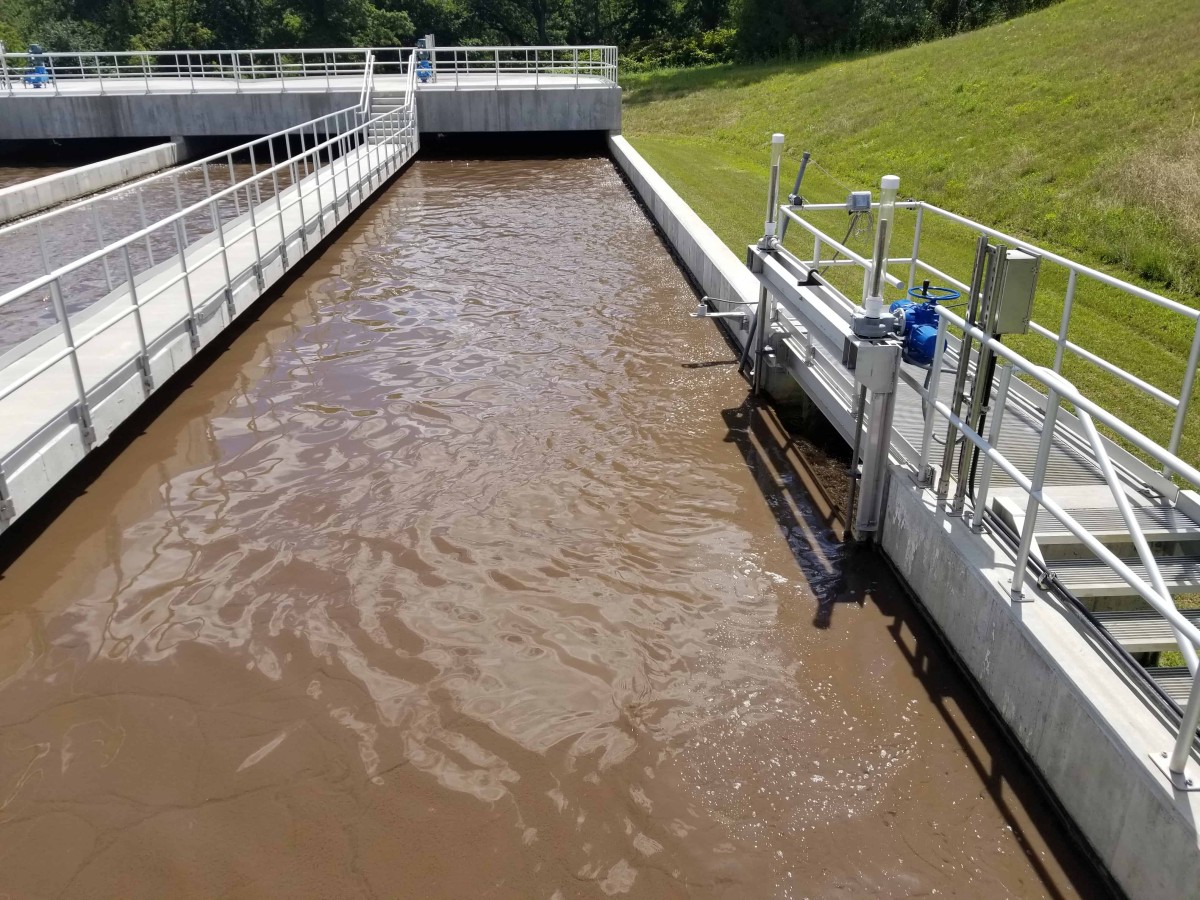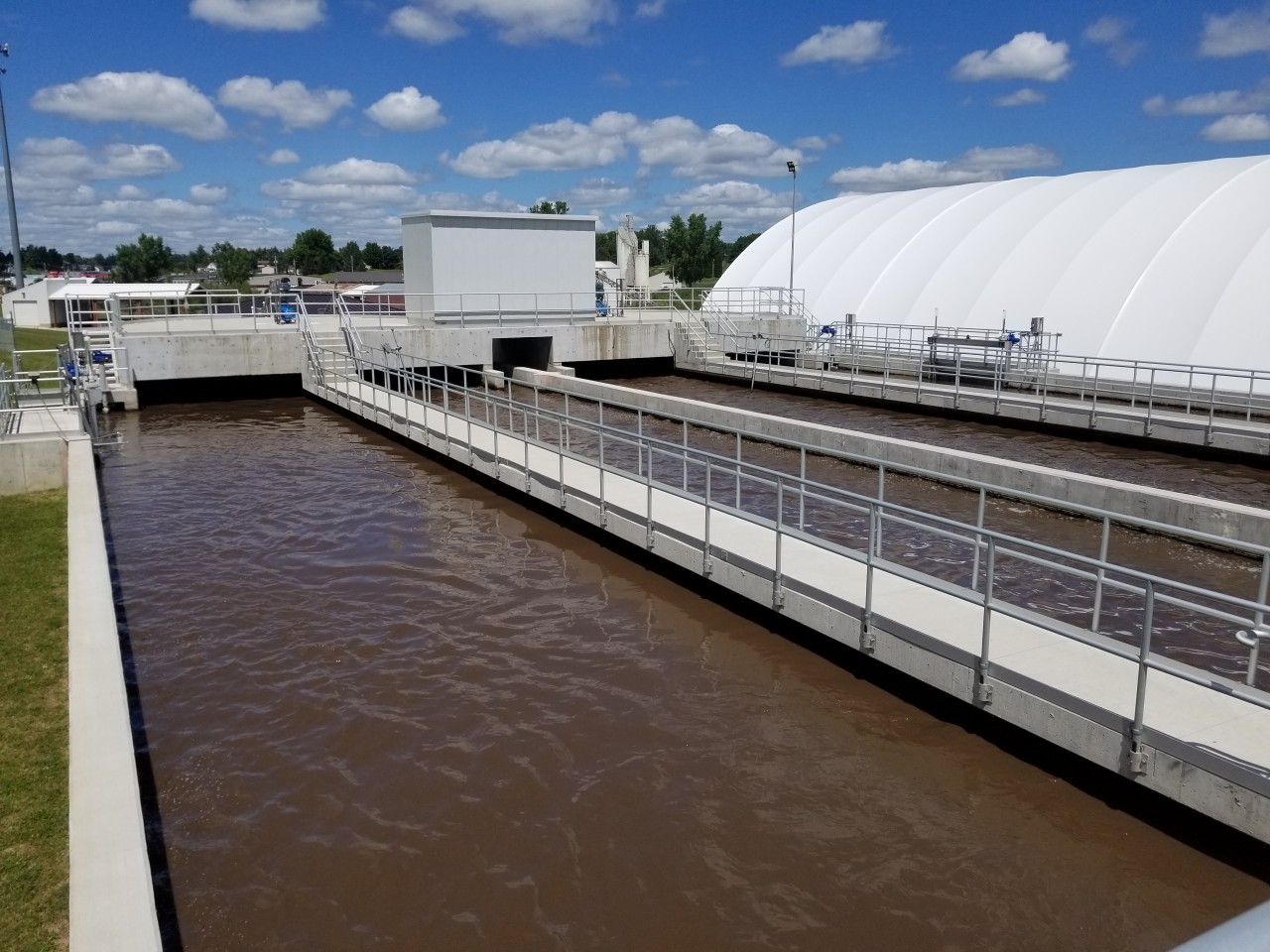Understanding the biological wastewater treatment process
Even after the primary physical treatment, wastewater contains large quantities of dissolved and colloidal organic material. Though primary treatment can reduce biochemical oxygen demand by as much as 30%, the treated effluent still requires a secondary treatment that uses complex biological processes to remove organic contaminants.
The goal of biological wastewater treatment is to reduce organic solids in the effluent with microbes that further degrade contaminants. Microorganisms like bacteria, algae and fungi feed on the organic matter and produce excess sludge that is removed to create biosolids. When compared to other mechanical or chemical treatment methods, biological wastewater treatment processes are more effective and economical, which accounts for their wide usage across wastewater treatment plants (WWTPs).
Below, we discuss different types of biological wastewater treatment processes and why you need a team of experienced wastewater engineers to help determine the most effective treatment method for your community.
Types of biological wastewater treatment processes
Biological wastewater treatment falls into two broad categories: aerobic and anaerobic processes. Optimum removal of organic contaminants from wastewater requires controlling and refining each type of treatment process.
Aerobic processes
The aerobic process uses oxygen to decompose organic solids. Some common aerobic wastewater treatment techniques include:
- Activated sludge process. One of the most common secondary wastewater treatment methods, this approach uses a multi-chamber reactor unit to maintain aerobic conditions and keep activated sludge — a mixed blend of microorganisms — suspended. In the tank, flocs of microorganisms mixed with wastewater use the organic solids and nutrients to grow while simultaneously removing them from wastewater as biomass. These flocs settle in the secondary clarifier and some sludge is recycled to the reactor to continue the process. While the activated sludge process works in most climates, colder environments can reduce treatment capacity. The activated sludge process can be used to remove nitrogen and phosphorus from wastewater.
Biological processes oxidize ammonia into nitrite, and then nitrate under aerobic conditions. By then reducing the dissolved oxygen in the wastewater to anoxic conditions, heterotrophic or autotrophic bacteria in the activated sludge reduces the nitrate to nitrogen gas.
Biological phosphorus removal incorporates phosphate in influent wastewater into the cell biomass. Phosphorus-accumulating organisms thrive under favorable growth conditions inside the reactor unit and metabolize soluble phosphorus.
- Aerated and controlled discharge lagoons. For smaller communities with fewer than 2,000 residents, this wastewater treatment option is one of the simplest and least expensive. Lagoon systems consist of pond-like basins in which wastewater can be collected and treated for a predetermined period. In aerated lagoon systems, aerators or blowers with diffusers mix the pond contents and add oxygen to the wastewater. Continuous aeration makes the biological wastewater treatment process more efficient.
Lagoons can facilitate aerobic and anaerobic wastewater treatment techniques. Such pond systems are called facultative lagoons, or controlled discharge lagoons. Post-treatment, wastewater is discharged in controlled amounts to comply with water quality standards. During cold winter months, when oxygenation and fermentation reaction rates are significantly reduced, pond discharge is prohibited.
- Fixed-film process. To comply with ammonia limits, municipalities must often add supplemental treatments to improve the efficacy of lagoon-based treatment systems. A fixed-film system uses an inert medium like plastic, wood, rock or other solid material as a surface on which the biomass can attach and grow. In a membrane-aerated biofilm reactor, a spirally wound and self-aspirating membrane supports the growth of biofilm – a natural layer of microbes that passively delivers oxygen and maintains aerobic conditions. In a WWTP, the fixed film process saves money by eliminating energy-intensive aeration cycles.
Anaerobic processes
Anaerobic wastewater treatment cycles use anaerobic bacteria and other microbes to break down organic contaminants. The anaerobic process is best suited for treating wastewater rich in biodegradable organic matter. Some of the most widely used anaerobic wastewater treatment processes include:
- Anaerobic sludge blanket reactor. Using an upflow anaerobic sludge blanket (UASB) produces less sludge and consumes less energy than other anaerobic treatments. The methane-producing UASB reactor includes a gas-solids separator to help settle the sludge into a blanket and maintain a high biomass concentration. Wastewater flows upward through the sludge for microorganisms to process. Gravity affixes settling particles to the sludge blanket while any biomass departing the reaction zone is circulated back. The UASB process can be applied to wastewater containing particulate and soluble matter, however, any effluent needs further treatment to meet quality requirements.
- Anaerobic filter. This fixed-bed biological reactor uses one or more filtration chambers in a series. Compared to anaerobic reactors or septic tanks, anaerobic filters are more effective at removing solids. Organic particles get trapped as wastewater enters the filtration chambers and microbes from the biomass on the filter's surface degrade organic matter via anaerobic digestion.
Determining the right biological wastewater treatment process for your municipality depends on several factors, including community size, construction costs, operating costs, the area required to install a treatment system, hydraulic retention time and sludge retention time. Partnering with an experienced team of wastewater engineers can help municipal leaders implement the most effective and affordable biological wastewater treatment process.
Determining the most effective biological wastewater treatment process
At Fehr Graham, we have provided end-to-end assistance with wastewater engineering for communities since the 1970s. Whether you need help developing construction designs, implementing treatment technologies, suggesting WWTP improvements and upgrades, or securing funding, we are your one-stop wastewater engineering solution.
To learn more about how Fehr Graham can help you select the right biological wastewater treatment process for your community, contact us or give us a call at 563.927.2060.
 |
Lucas Elsbernd, a Professional Engineer and Senior Project Manager, finds innovative solutions to challenging water and wastewater projects. He manages municipal, commercial and industrial planning and design projects in the water resources environment. He fosters a positive client experience and collaborates with leaders throughout the firm on project pursuits and technical issues. Lucas is one of the firm’s water and wastewater experts. He has a strong technical knowledge of water and wastewater treatment design and construction engineering. Contact him at |
Collaborative, Insightful, Results-Driven Solutions
Fehr Graham provides innovative engineering and environmental solutions to help improve the lives and communities of our customers.


